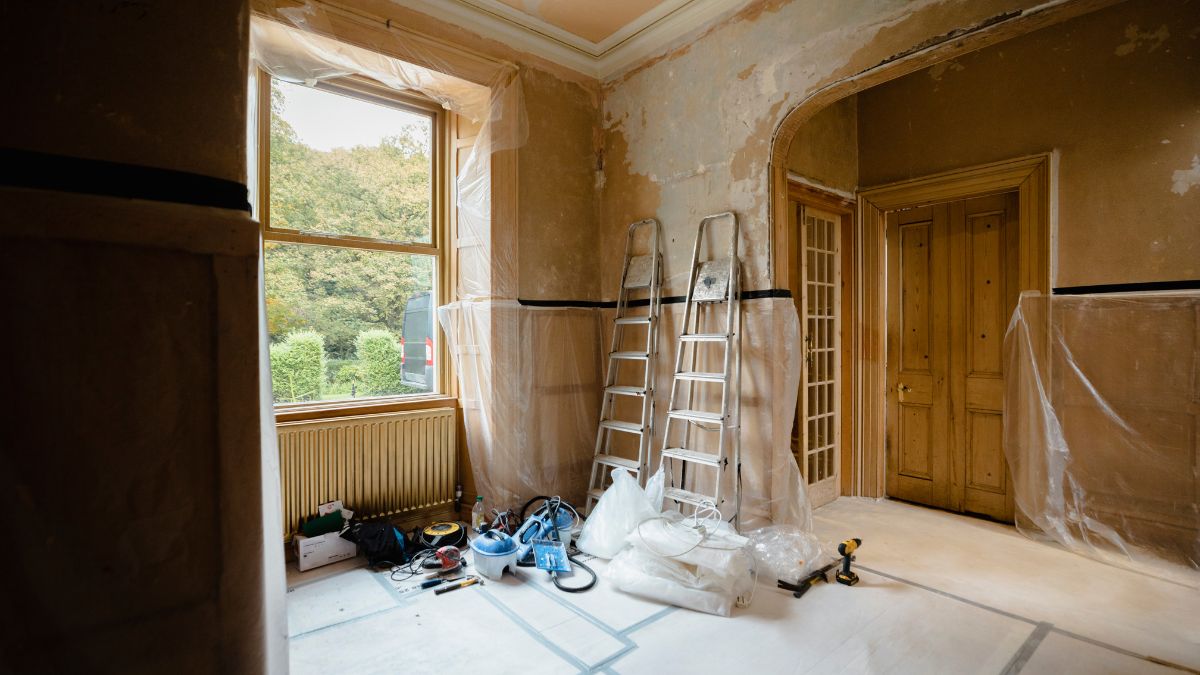It may be a thrilling and life-changing event to renovate your home. The ultimate result is a lovely and revitalized living area, whether you’re remodeling one room or your entire home. Dealing with the dust and debris left behind after a restoration project, however, is a challenge.
With the help of the detailed advice in this book, you can create a dust-free house following renovations, providing a hygienic atmosphere for you and your family.
Preparing for the Renovation
It’s critical to take proactive steps to reduce the spread of dust throughout your home before starting any restoration project. Create a containment zone by first enclosing the building site with heavy-duty plastic sheeting.
As a result, the dust will stay confined to the workspace and won’t spread to other areas of your house.
Protecting Furniture and Belongings
It is crucial to protect your furniture and possessions while having work done on them. Any goods that might be exposed to dust should be moved or covered first. Protect large furniture pieces with plastic covers or old bedsheets, and if at all possible, think about temporarily putting smaller objects in a different room or elsewhere.
Your possessions will be protected from dust buildup and potential damage thanks to our preventive approach.
Implementing Dust Control Measures
Adopting efficient dust management strategies is crucial during the renovation process. Encourage the usage of dust collecting equipment by your contractors, such as sanders and saws with integrated vacuums.
This will greatly lessen the amount of dust that is released into the air by assisting in its capture and containment at the source.
Ventilation and Air Filtration
A dust-free house after renovations requires effective ventilation and air filtration. To stop dust from entering the ducting, seal air vents near the building site. To properly capture and trap airborne particles, utilize high-efficiency particulate air (HEPA) filters in your HVAC system.
Thorough Cleaning Techniques
It’s time to deal with any dust and debris that may have gathered in your home after the restoration is finished. Start by taking off the plastic sheets and properly discarding it. Starting at the top and working your way down, start cleaning.
o properly capture and trap dust, use disposable electrostatic wipes or microfiber towels. Due to their propensity to collect more dust, pay additional care to surfaces including floors, light fixtures, and counters.
Vacuuming and Mopping
Vacuuming and mopping are your buddies when it comes to post-renovation cleaning. To completely clean carpets, upholstery, and difficult-to-reach places, use a vacuum cleaner with a HEPA filter. To remove the most dust, vacuum both horizontally and vertically.
After vacuuming, wipe down hard surfaces with a damp cloth or microfiber pad to remove any last bits of dust.
Cleaning Air Ducts and Filters
After a makeover, the air ducts and filters in your HVAC system might hold a lot of dust, so don’t forget about them. If you want to get rid of accumulated dirt and enhance the general quality of the air in your home, think about hiring a professional duct cleaning service.
Additionally, to avoid dust accumulation and guarantee peak performance, replace your HVAC filters on a regular basis.
Professional Post-Renovation Cleaning Services
You might want to think about using expert post-renovation cleaning services if you want to ensure that your house is genuinely spotless and dust-free. These professionals can thoroughly clean your home and remove all traces of dust because they have the necessary training, experience, and equipment. They will thoroughly clean every nook and cranny to give your newly refurbished space a fresh start.
FAQs about Home Renovation Dust-Free:
1: How can I minimize dust during a home renovation?
You can use heavy-duty plastic sheets to block off the building site, dust-collection gear, sufficient ventilation, and air filtering to reduce dust generation during home renovations.
These steps assist in keeping the dust in check and halt its spread inside your house.
2: How can I protect my furniture and belongings during a renovation?
You can relocate your furniture and possessions or cover them with old bedsheets or plastic covers to protect them while the remodeling is going on.
3: What are HEPA filters, and why are they important for dust-free homes?
Because they efficiently enhance air quality by eliminating dust and other allergens from the air, they are crucial for dust-free homes.
4: What are some recommended cleaning techniques for post-renovation cleaning?
To properly collect dust, use disposable electrostatic wipes or microfiber towels. Pay attention to both horizontal and vertical cleaning motions when using a HEPA-filtered vacuum. To remove any leftover dust, use a moist mop or microfiber pad to mop hard surfaces.
5: Is it necessary to clean air ducts and filters after a renovation?
Yes, it’s important to clean the air ducts and filters following a renovation. The air ducts can become clogged with dust and debris, lowering air quality and possibly resulting in respiratory problems.
Additionally, it’s crucial to routinely replace your HVAC filters if you want to avoid dust accumulation and retain peak efficiency.
Final Words
You may effectively complete the difficult process of cleaning up after a remodeling by using these tips and tactics, and you can make a dust-free refuge for you and your loved ones. Keep in mind that having a clean, healthy home improves your entire wellbeing in addition to being aesthetically pleasing.
- Key Strategies to Mitigating risks in Rental Property Investments
- The Essential Role of Property Management Companies
- The Ultimate Guide to Handling Evictions and Tenant Conflicts
- The Hidden Impact of Taxes and Insurance Costs
- Protect Your Property: Essential Practices for Effective Tenant Screening

